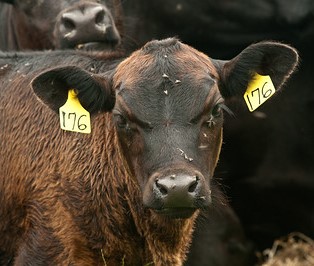The California Department of Public Health (CDPH) today reported one more human infection involving H5 avian influenza, raising its total to 27. The US Centers for Disease Control and Prevention (CDC) added the case to its confirmed list today, which notes that all of California's cases are related to dairy cattle exposure.

The case lifts the nation's number of human infections this year to 53 in seven states.
California's outbreaks in dairy cattle began in late August, and since then the virus has hit 335 farms. The state is also battling a recent surge in outbreaks on commercial poultry farms (see related CIDRAP News story today).
Sequencing finds susceptibility changes, but no clinical concerns
In other developments, the CDC, in an update on human cases today, reported new findings from genetic sequencing of samples from 11 human cases from poultry farms in Washington. It noted that some workers in Washington had mild upper respiratory symptoms, but none were hospitalized.
Sequencing found no changes in the hemagglutinin (the "H5" part of the virus name) associated with increased infectivity or transmissibility in people. In three specimens, however, scientists identified a change known as NA-S247N that may slightly reduce susceptibility to neuraminidase inhibitor antiviral drugs, based on lab tests.
"It is important to note that this change is not spreading in H5 viruses. Additionally, this change is not expected to have an impact on the ability of influenza viruses to replicate or spread more easily," the CDC said, adding that the change isn't likely to have a meaningful impact on the clinical benefit of oseltamivir (Tamiflu).
Meanwhile, the CDC found a different change (PA-I38M) in the polymerase acidic protein of a virus from a recently confirmed case in California that has been associated with reduced susceptibility to the antiviral medication baloxavir marboxil. The change had been seen sporadically in a few avian flu viruses. The agency emphasized that the drug hasn't been recommended for treatment or post-exposure prophylaxis (prevention) of H5N1 infection.













